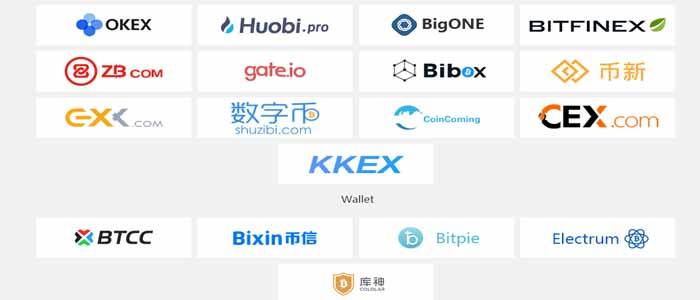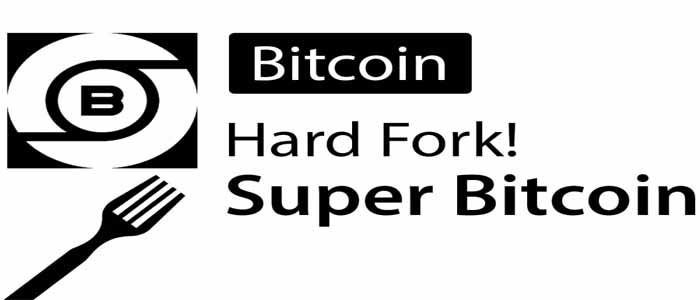What Is Super Bitcoin?
The expansion war over the past three years has severely hindered the development of the bitcoin technology. Bitcoin has lost a tremendous share of the cryptocurrency market due to aggressive competition coming from the likes of Ethereum and ZCash. The bitcoin community has therefore gathered a group of enthusiasts and developers who share the goal of revitalizing bitcoin dominance. The fork will take place at block height 498888, after which new functionalities will be added to the forked chain. The original bitcoin holders will be compensated with one super BTC for every BTC held.
- Overview - Table of Contents
- What Is Super Bitcoin?
- Getting Started With Super Bitcoin
- How To Get A Super Bitcoin Wallet?
- Super Bitcoin Resources
- How To Buy Super Bitcoin?
- How To Earn Super Bitcoin?
- What Is Super Bitcoin Mining?
- Latest Super Bitcoin News
SBTC will have a total supply of 21,210,000, of which 210,000 will be pre-mined. The 210,000 pre-mined tokens will be managed by the Super BTC Foundation and primarily used to encourage early developers, invest in the super BTC ecosystem and ensure the operation of the Super BTC Foundation.
The number of active and upcoming Bitcoin hard forks is quite stunning. While most people may only be able to name one or two forks, there are quite a few other projects out there as well. Super Bitcoin, for example, is one of the more recent hard forks. Although it has flown under most people’s radars, there is a genuine interest in the project. It also has the support of quite a few cryptocurrency exchanges right now.
The year 2017 has produced many different versions of Bitcoin, each with its own unique features, aspects, and goals. It is evident a lot of people are not too happy with the way Bitcoin works right now, and they all have their own ideas about how to make it better. Implementing those changes on the main Bitcoin blockchain is not always feasible, as the Bitcoin Core team has so many different options to consider these days.
As a result, we’ve seen a growing number of Bitcoin hard forks, all of which try to bring more value to the cryptocurrency ecosystem. Bitcoin Cash has been a major success so far, and Bitcoin Gold isn’t doing too badly either. Whether or not Super Bitcoin can achieve similar results remains to be determined. However, with support from exchanges right off the bat, this altcoin will see some initial success over the next few days.
Super Bitcoin went live a few days ago when the Bitcoin network discovered block 498,888, allowing exchanges to begin issuing this currency to holders of Bitcoin. OKEx, Huobi Pro, Coinut, CEX.com and a few others have all (allegedly) pledged support for this hard fork, although it remains to be seen if they will enable trading before the year is over.

On the mining front, it seems Super Bitcoin has two major mining pools helping out. Both BTCC Pool and F2Pool have set up servers for mining Super Bitcoin, which is rather interesting. All of this is according to a Medium post dated a few days ago, yet F2Pool’s main page doesn’t list SBTC as one of its mineable currencies. It will be interesting to see how many people decide to mine Super Bitcoin.
On the technical side, it seems the total supply will be 21,210,000 SBTC. This is slightly more than Bitcoin’s 21 million coins. All of the “excess” coins were pre-mined and held by the Super Bitcoin Foundation. The plan is to use these funds to encourage early developers, ensure the foundation continues to operate, and grow the ecosystem over time.
Other features of Super Bitcoin include support for smart contracts, the Lightning Network, zero-knowledge proofs, and bigger blocks. More specifically, the block size can be expanded to 8MB at its highest, although this number may still increase depending on how many transactions are processed on the network. It is quite interesting to see this project focus on so many different things, all of which are mainly borrowed from other projects.
- Overview - Table of Contents
- What Is Super Bitcoin?
- Getting Started With Super Bitcoin
- How To Get A Super Bitcoin Wallet?
- Super Bitcoin Resources
- How To Buy Super Bitcoin?
- How To Earn Super Bitcoin?
- What Is Super Bitcoin Mining?
- Latest Super Bitcoin News
Right now, no one knows for sure what the future will hold for Super Bitcoin. The currency is tracked on CoinMarketCap, though it’s the futures market rather than the actual currency. So far, it seems the market values these futures at close to US$327, which is a pretty solid amount for a brand new altcoin. Whether or not this reflects the actual SBTC value remains to be determined, though. If that value holds up, it seems we will have four different versions of Bitcoin in the crypto top 10. That would certainly be a sight to behold.
Getting Started With Super Bitcoin
There will be a total supply of 21,210,000 SBTC, with 210,000 being pre-mined. The pre-mined SBTC, according to the official website, “shall be managed by the foundation to encourage the early developers, invest ecological construction and operate the foundation.”
Basically, the goal is to create a version of bitcoin with smart contract support. The development team believes that bitcoin has lost too much market share to competitors like Ethereum over the years. Ethereum has smart contracts, while bitcoin does not. Smart contracts make Ethereum the ideal platform for decentralized apps, while bitcoin does not have decentralized apps.
The Super Bitcoin sees this as a problem. To solve that problem, they want to add smart contracts – and most other major features – into Super Bitcoin.
Aside from four huge improvements, we have no information about how Super Bitcoin plans to accomplish these goals. The company hasn’t published a whitepaper online. They’ve provided a basic timeline of their development goals, but we don’t have much information overall.
Super Bitcoin Features
What makes Super Bitcoin different from Bitcoin (BTC), Bitcoin Cash (BCH), and other versions? There are four main differences:
- Smart Contracts
- Lightning Network
- Zero Knowledge Proofs
- Bigger Blocks
Basically, Super Bitcoin wants to simultaneously implement every protocol that’s been launched for bitcoin in the last few years. They don’t plan on launching all of these features at once, although they do plan to launch them within a year. Smart contracts will be added by March 2018, for example, while zero knowledge proofs will be added by May.

Ultimately, Super Bitcoin seems like a lot of other bitcoin proposals that have launched in recent weeks. There’s a small website explaining the basic ideas behind the project, and there’s no whitepaper or further information that we can see. That’s unusual considering the coin is planning to launch in December 2017.
Obviously, proposals like Lightning Network, bigger block size, and smart contracts could improve the bitcoin protocol in a number of different ways. However, it remains to be seen if the development team can accomplish these ambitious goals.
Bitcoin Diamond
First up is Bitcoin Diamond (BCD) which probably gained the most support across exchanges before they launched. They have some code that’s clearly based on Bitcoin Core. There apparently isn’t much wallet support, though there’s a wallet called BitPie that supports it. I can’t vouch for that wallet, but they do support some different currencies and it’s more or less the only game in town if you don’t want to run a full BCD node.
The main difference with Bitcoin Diamond is that they multiplied the supply by 10. If you had 1 BTC before block 495866, you now have 10 BCD. This is done by moving the decimal point rather than making the coin more divisible. That is, with Bitcoin, 100 million satoshi = 1 BTC. With Bitcoin Diamond, 10 million satoshi = 1 BCD. It’s really just pure marketing.
Nobody really knows who the developers are but the code is relatively similar to Bitcoin Core, so there’s not too much to worry about. I would still run the code in a separate machine, physical or virtual.
- Overview - Table of Contents
- What Is Super Bitcoin?
- Getting Started With Super Bitcoin
- How To Get A Super Bitcoin Wallet?
- Super Bitcoin Resources
- How To Buy Super Bitcoin?
- How To Earn Super Bitcoin?
- What Is Super Bitcoin Mining?
- Latest Super Bitcoin News
For the technical geeks out there, the main difference in the transaction is that version is now 12 instead of 1. Version 12 requires that you put a block hash as the field right after version, which takes care of replay protection. The block hash can be any block hash that has already occurred as far as I can tell. Unlike BCH and BTG which use the BIP143 standard for signing all transactions, BCD uses the legacy signing for non-segwit transactions (subject to quadratic hashing and difficulty assessing value of transaction for offline signing) and BIP143 for segwit transactions.

This is an odd choice for replay protection as there is a perfectly good forking id standard pioneered by BCH and BTG, but alas, BCD decided to do its own thing. The hash type is the same as Bitcoin (usually SIGHASH_ALL) and unlike BTG or BCH, the SIGHASH_FORKID stuff is not used at all.
Bitcoin Diamond is trading at around $20/BCD as of this writing, which ends up being about $200/BTC or 1.3%.
Super Bitcoin
Super Bitcoin (SBTC) forked on block 498888 and is a 1:1 fork, no special decimal point manipulation needed. The coin purportedly will have Lightning, zero-knowledge proofs and smart contracts, none of which I saw in their code repository.
Ambitions aside, the developers of this fork are at least known and on their website. Again, it’s mostly Bitcoin Core code with a few modifications. There are several exchanges that already support this or are planning to support this, so it’s at least got some potential for liquidity.
Main technical difference is that transactions are version 2, though version 1 is still accepted. The signing does use SIGHASH_FORKID, but not an actual fork number. Instead, the entire Signature Hash has the string “sbtc” appended at the end. This sounds easy, but after debugging this for about 12 hours, I discovered that there’s actually the length of the string prepended to this string, so it’s actually something like 0473627463 in hex, not 73627463 as you would expect. By the way, I’m seeing something very similar in the United Bitcoin repo, so for all you wallet developers, keep in mind that you may need to put the length of the string that gets appended at the end.
Again, this is an odd way of doing replay protection as a perfectly good way that BTG and BCH pioneered is available, but such is the way of forks. Much like BCD, SBTC uses legacy signing for non-segwit transactions (subject to quadratic hashing and difficulty assessing value of transaction for offline signing) and BIP143 signing for segwit transactions. Again a puzzling choice since using a single signing algorithm would make wallet code vastly simpler. Not everyone will make choices that are going to be convenient for wallet developers.

The only SPV wallet I could find was BitPie and it’s a toss up as to whether this wallet is safer or the SuperBitcoin core wallet is safer. SBTC is trading at around $155 as of this writing which gives you about 1%.
BitCore
Lastly is something that’s between a hard fork and an airdrop. BitCore (BTX) basically took the UTXO set from Bitcoin, compressed the outputs for each address and distributed on their chain. In layman’s terms, they cleaned up the ledger (blockchain) so that it’s a lot smaller.
This is the most clever of the hard forks in that it doesn’t require the Bitcoin blockchain like other hard forks do (120GB+!) and at least innovates by cleaning things up a little. Unfortunately, distribution on this coin is a bit stingier as you only get 0.5 BTX per 1 Bitcoin you had as of block 492820. They have a continuing airdrop going on, so there’s also that aspect which helps the coin.
BTX is supported by Coinomi, which has a very convenient sweep feature which can help you get at cold wallets and a seed entry feature which can help you get at coins that use the same BIP39 standard. Unfortunately, this is also the coin that’s worth the least as it trades at around $20 as of this writing which gives you only about $10/BTC or 0.1%.
How To Get A Super Bitcoin Wallet?
There are a few ways to get these coins, but regardless of which method you choose, here are the common steps.
- Whatever Bitcoins you had at the forking block, move them. If you’re using a Trezor, for example, you’re going to need the seed, so move them to another Trezor with a different seed. And yes, it’s every coin you own. This is for your protection. No software can take your bitcoins if you move them away from these private keys first.
- Keep the seed or private key for a while. You have no idea what other hard forks are coming and some may have some substantial payoffs.
- Take your time and double check everything. You don’t want to mess up on this stuff.
- Be patient. You’re not going to be able to insta-dump them just yet (please, somebody make this business already!)
At least for SBTC and BTX, you have the option of entering the private keys into an app called Bither for SBTC and Coinomi for BTX. You can scan the private key (WHICH SHOULD NOT HAVE BTC IN IT) and store them in the BitPie or Coinomi wallets for safekeeping.
This is probably the easiest, but also a bit risky as you may not trust these wallets. Unfortunately, there isn’t an option to do this with BCD on any wallets yet and be careful about any that claim to be able to do this as they’ve been known to steal funds from you. (this is why step 1 above is so important!) As long as you moved your BTC out of these addresses first, the only real risk is that another hard fork coin you’re entitled to may be taken away from you.

The more advanced option is to create a separate physical or virtual machine and run the actual core software. You can download the source code from the coin’s repository and compile it yourself. Fortunately, since most of them are forks of Bitcoin Core, the Bitcoin Core compilation instructions for mac, windows and linux work just fine.
- Overview - Table of Contents
- What Is Super Bitcoin?
- Getting Started With Super Bitcoin
- How To Get A Super Bitcoin Wallet?
- Super Bitcoin Resources
- How To Buy Super Bitcoin?
- How To Earn Super Bitcoin?
- What Is Super Bitcoin Mining?
- Latest Super Bitcoin News
Once you’ve compiled the source code and have their respective binaries, you can launch the binaries until the blockchains are synced (this will take roughly a day on a decent connection). You will want to disconnect the machine from the internet at this point.
You’ll want another physical/virtual machine to run the same code on that’s connected to the internet. This is so that you can broadcast transactions you make on the first machine.
Go back to the first machine, import the private keys of your coins into the core wallet that all these coins come with. Then send the coins to an address you want and use the “getrawtransaction” command to get the raw hex. Copy that to a usb stick or sd card and transfer that to the second, internet-connected machine and broadcast it there.
This should more or less do what you want, though there’s some small risk that you might get some malware, but it’s on a machine you’re going to wipe anyway, so who cares?

The paranoid option is to make your own transactions and broadcast them connecting to a node on the network manually. The hard part is not the connecting to the network, but actually making the transaction. You’ll need your own library to sign the transaction and getting the Signature Hash is often not trivial. That said, this is the absolute safest option as you do not need to trust any software and indeed I spent a good amount of time doing this very thing.
Super Bitcoin Resources
How To Buy Super Bitcoin?
The roadmap involves embedding Smart Contracts on March 31st, 2018, followed by incorporating Zero Knowledge Proof on May 31st 2018, followed by dynamic checkpoint protection on November 30th 2018 to fully decentralize mining.
Bitcoin Holders will be rewarded with SBTC on a 1:1 basis at the fork, and the total supply of SBTC will be 21,210,000, of which 210,000 will be pre-mined. The 210,000 pre-mined tokens will be managed by the Super BTC Foundation, and will be mainly used to encourage early developers, for investment in the SBTC ecosystem, and to ensure the operation of the SBTC Foundation.
And currently 12 exchange is supporting Super bitcoin.

What Is Super Bitcoin Mining?
Broadly following Bitcoin-esque attributes, Super Bitcoin is nonetheless notable for its supply 21,210,000, which includes 210,000 pre-mined coins.
- Overview - Table of Contents
- What Is Super Bitcoin?
- Getting Started With Super Bitcoin
- How To Get A Super Bitcoin Wallet?
- Super Bitcoin Resources
- How To Buy Super Bitcoin?
- How To Earn Super Bitcoin?
- What Is Super Bitcoin Mining?
- Latest Super Bitcoin News
“The 210,000 pre-mined tokens will be managed by the Super BTC Foundation and are mainly used to encourage early developers, invest in the super BTC ecosystem and ensure the operation of the Super BTC Foundation,” the website explains.

Major Bitcoin mining pools f2pool and BTCC are allegedly slated to support the fork, while 21 exchanges will notionally offer trading, according to listings.
Latest Super Bitcoin News
Binance Distributes SBTC and BCX
Binance has completed the distribution of SuperBitcoin (SBTC) and Bitcoin X (BCX). You can login and check that the SBTC and BCX has been credited to your account.
As previously announced, the distribution of SBTC (at a rate of 1 BTC: 1 SBTC) and BCX (at a rate of 1 BTC: 10,000 BCX) was based on a snapshot of BTC balances at Block 498,888, which was taken at 10:29:53 AM (UTC) on 2017/12/12.
In order to ensure the security of your assets, we will announce the opening of withdrawals for SBTC and BCX after we deem each respective blockchain to be stable.
